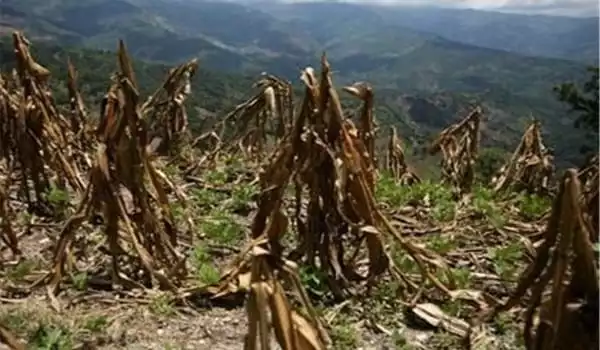Ground-level ozone is a danger to food production because it reduces the yield and quality of key staple crops. Soybean, wheat, and rice are the most vulnerable to ozone, followed by maize and barley.
Ground-level ozone is created by a complex series of chemical processes that take time to build up ozone concentrations. As a result, high amounts are observed in rural and highland areas, some distance downwind of cities, and other areas where the chemical precursors to ozone are generated. The largest amounts are found in hot, sunny conditions. According to a new study, ozone in the lowest layers of the atmosphere reduces maize crop yields and affects the types of compounds present inside the leaves.
Although stratospheric ozone protects us by filtering out UV light from the sun, tropospheric ozone is a contaminant. According to a new study, ozone in the lowest layers of the atmosphere reduces maize crop yields and affects the types of compounds present inside the leaves.
Ozone is generated when nitrous oxide, which is emitted by industry and automobile tailpipes, is broken down by sunlight and chemically interacts to form ozone. For almost 20 years, researchers at the University of Illinois Urbana-Champaign have been examining the effects of ozone pollution on crops in a unique facility where crops can be grown under real-world farm field settings but with higher ozone pollution concentrations.
Ozone pollution is more prevalent in the northern hemisphere and reaches a peak during the warmer summer months. Because high ozone concentrations overlap with crop growth both temporally and spatially, it is critical to investigate how high ozone concentrations affect agricultural yields.
Jessica Wedow
Ozone pollution is a worldwide issue that necessitates global solutions. To lessen the threat of ozone pollution to food production, more stringent reductions in ozone precursor emissions are required around the world. Policies to reduce air pollution must be combined with policies to address climate change, as both have an impact on the world’s food supply. Improved measurement of ozone consequences in the context of climate change is urgently needed to enable better future planning of food availability at a variety of scales (national, regional, global).
“Ozone pollution is more prevalent in the northern hemisphere and reaches a peak during the warmer summer months. Because high ozone concentrations overlap with crop growth both temporally and spatially, it is critical to investigate how high ozone concentrations affect agricultural yields” Jessica Wedow, a former Ph.D. student in Ainsworth’s group, agreed.

The researchers examined three maize varieties: two inbred lines, B73 and Mo17, and the hybrid cross B73 × Mo17. Surprisingly, they discovered that persistent ozone exposure reduced productivity by 25% in hybrid crops while leaving inbred plants untouched. In addition, the hybrid plants aged faster than the inbred crops.
The chemical makeup of the leaves was analyzed to determine why B73 × Mo17 was affected. “Ozone had no effect on the inbred plants. The hybrid plants, on the other hand, produced more to copherol and phytosterols, which aid in the quenching of reactive oxygen molecules and the stabilization of chloroplast membranes “Wedow stated. These findings imply that because hybrid maize is more susceptible to ozone exposure, it may produce more compounds to combat the effects of chronic ozone stress.
Ozone concentrations are increasing in emerging countries (e.g., India and China) due to rapid population growth and industrialization, posing a threat to global food production. The concentration of background ozone in Europe is increasing due to increases in emissions elsewhere in the northern hemisphere. North American emissions, for example, may be responsible for up to 60% of the present ozone effects on crop productivity in Europe. Even with current European rules to decrease ozone pollution, economic losses from wheat are expected to be €2 billion in 2020. (based on wheat prices in 2000).
“This study provides clues to improving maize tolerance to ozone pollution,” stated Lisa Ainsworth (GEGC), the USDA ARS Global Change and Photosynthesis Research Unit’s Research Leader. The group is also investigating whether these responses are shared by other key grasses, such as those used in bioenergy.
More study is needed to increase our ability to assess and forecast ozone’s effects on agricultural output and quality. Field-based investigations are especially important for improving our understanding of the effects of ozone on crop quality, such as protein production and content, sugar and mineral content, and assessing the effects of ozone on nutritional value.
















